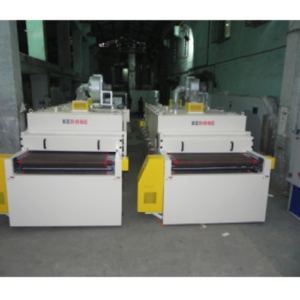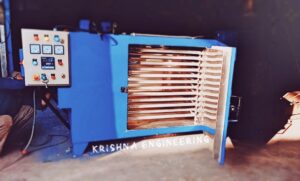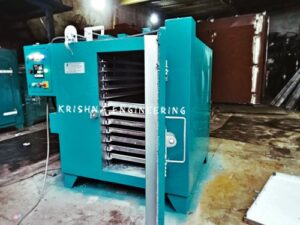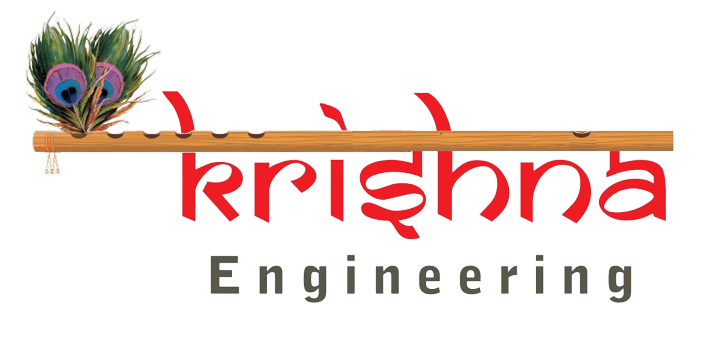What is Fish Tray Dryer?
Drying is a well-known way to preserve of fish, sometimes in a combination with salting. The dried fish has a long shelf life and has been the easiest way of preservation of this product for exportation since ancient times.
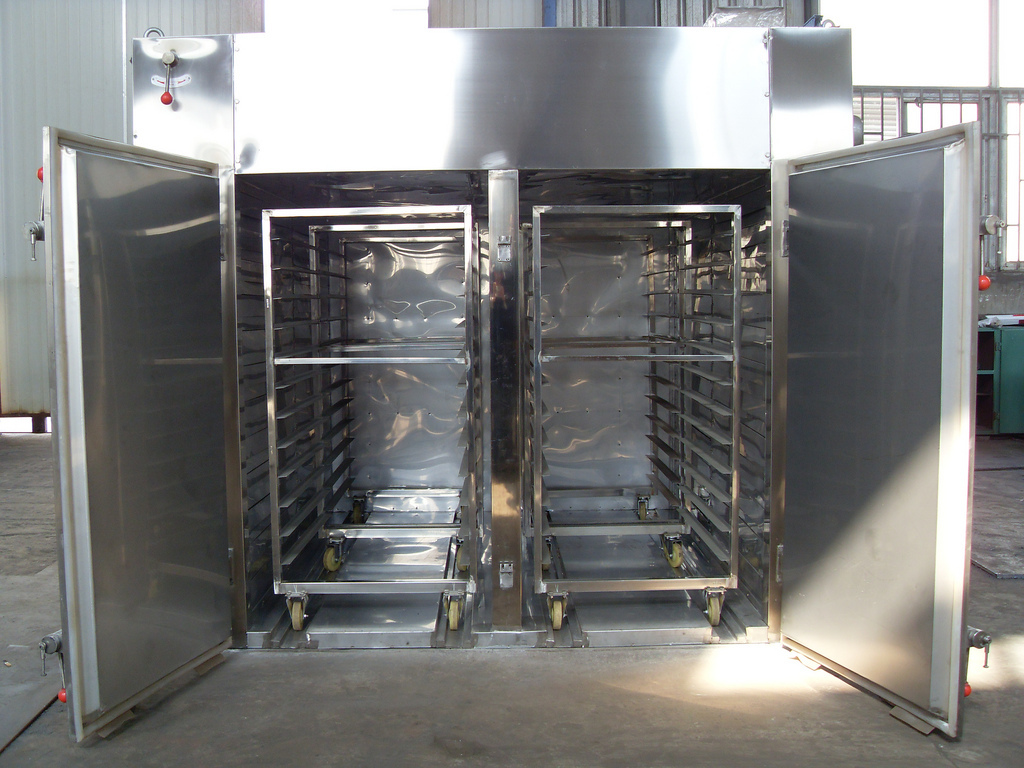
Fish is an extremely nutritious food than meat and egg and it’s extremely perishable because of its high moisture content that is about 80th. Fish preservation is important immediately after catch to increase the shelf life of fish.
Preservation methods helps to maintain the quality of fish for longer period of time, prevents spoilage and decomposition, retains its original nutritional contents and makes transportation and storage of fish easier. Fish preservation techniques vary with type, nature, size and condition of fish.
Driers are devices used to dry fish under controlled environment. A variety of driers are used for drying fish, e.g. Cabinet drier, Kiln drier, Tunnel drier, Spray drier, Solar tent drier etc.
A fish tray dryer is a specialized type of tray dryer used for drying fish or seafood products. It is designed to remove moisture from the fish, preserving it for longer shelf life, reducing the risk of spoilage, and enhancing flavor and texture. Fish tray dryers are commonly used in fish processing facilities, commercial fisheries, and seafood industries.
Here are some key features and considerations specific to fish tray dryers:
Construction: Fish tray dryers are typically made of stainless steel or other corrosion-resistant materials to withstand the harsh and corrosive nature of fish and seafood products. The trays or shelves are designed to accommodate fish fillets, whole fish, or other seafood items while allowing for proper airflow and heat distribution.
Fish Processing: Prior to drying, fish may undergo cleaning, gutting, and filleting processes. Some fish tray dryers may also incorporate fish washing or sanitizing systems to ensure proper hygiene and minimize bacterial contamination.
Temperature and Humidity Control: Fish tray dryers have temperature and humidity control systems to create optimal drying conditions for fish. The temperature and humidity settings depend on the specific fish species, desired drying time, and moisture content required for the final product. Precise control of these parameters helps prevent over-drying or under-drying of the fish.
Air Circulation: Fish tray dryers utilize air circulation to facilitate drying. Fans or blowers ensure proper airflow over the fish trays, helping to remove moisture and maintain consistent drying throughout the process. Adequate airflow also prevents the formation of mold or bacteria on the fish.
Drying Time and Duration: The drying time and duration vary depending on the fish species, size, initial moisture content, and desired final moisture content. The drying process may take several hours to several days, during which the fish gradually loses moisture until the desired moisture level is achieved.
Monitoring and Quality Control: Fish tray dryers may incorporate monitoring and control systems to track and record temperature, humidity, and drying time. These systems assist in quality control, ensuring that the fish is dried to the desired moisture level for optimal shelf life and quality. Manual checks for fish texture, color, and smell may also be performed to determine readiness.
Sanitation and Hygiene: Fish tray dryers prioritize sanitation and hygiene to prevent cross-contamination and maintain product quality. The trays or shelves should be cleaned thoroughly between batches to eliminate any residual bacteria or contaminants. The drying chamber may include features such as easy-to-clean surfaces, drain systems for collecting liquid runoff, and removable parts for thorough cleaning.
Packaging and Storage: Once the fish is dried to the desired moisture level, it is typically removed from the trays and packaged for storage or distribution. Vacuum-sealed bags or moisture-resistant packaging materials may be used to maintain the quality and extend the shelf life of the dried fish products.
Fish tray dryers play a crucial role in the fish processing industry by preserving fish products and extending their shelf life. They offer efficient and controlled drying processes, ensuring that dried fish maintains its quality, flavor, and nutritional value while reducing the risk of spoilage.
Worldwide Exports Location:
Following Countries: Afghanistan, Albania, Algeria, Andorra, Angola, Antigua And Barbuda, Argentina, Armenia, Australia, Austria, Azerbaijan, Bahamas, Bahrain, Bangladesh, Barbados, Belarus, Belgium, Belize, Benin, Bhutan, Bolivia, Bosnia And Herzegovina, Botswana, Brazil, Brunei, Bulgaria, Burkina Faso, Burundi, Cabo Verde, Cambodia, Cameroon, Canada, Central African Republic (CAR), Chad, Chile, Colombia, Comoros, Democratic Republic Of The Congo, Republic Of The Congo, Costa Rica, Cote D’Ivoire, Croatia, Cuba, Cyprus, Czech Republic, Denmark, Djibouti, Dominica, Dominican Republic, Ecuador, Egypt, El Salvador, Equatorial Guinea, Eritrea, Estonia, Ethiopia, Fiji, Finland, France, Gabon, Gambia, Georgia, Germany, Ghana, Greece, Grenada, Guatemala, Guinea, Guinea-Bissau, Guyana, Haiti, Honduras, Hungary, Iceland, India, Indonesia, Iran, Iraq, Ireland, Israel, Italy, Jamaica, Japan, Jordan, Kazakhstan, Kenya, Kiribati, Kosovo, Kuwait, Kyrgyzstan, Laos, Latvia, Lebanon, Lesotho, Liberia, Libya, Liechtenstein, Lithuania, Luxembourg, Macedonia (FYROM), Madagascar, Malawi, Malaysia, Maldives, Mali, Malta, Marshall Islands, Mauritania, Mauritius, Mexico, Micronesia, Moldova, Monaco, Mongolia, Montenegro, Morocco, Mozambique, Myanmar (Burma), Namibia, Nauru, Nepal, Netherlands, New Zealand, Nicaragua, Niger, Nigeria, North Korea, Norway, Oman, Pakistan, Palau, Palestine, Panama, Papua New Guinea, Paraguay, Peru, Philippines, Poland, Portugal, Qatar, Romania, Russia, Rwanda, Saint Kitts And Nevis, Saint Lucia, Saint Vincent And The Grenadines, Samoa, San Marino, Sao Tome And Principe, Saudi Arabia, Senegal, Serbia, Seychelles, Sierra Leone, Singapore, Slovakia, Slovenia, Solomon Islands, Somalia, South Africa, South Korea, South Sudan, Spain, Sri Lanka, Sudan, Suriname, Swaziland, Sweden, Switzerland, Syria, Taiwan, Tajikistan, Tanzania, Thailand, Timor-Leste, Togo, Tonga, Trinidad And Tobago, Tunisia, Turkey, Turkmenistan, Tuvalu, Uganda, Ukraine, United Arab Emirates (UAE), United Kingdom (UK), United States Of America (USA), Uruguay, Uzbekistan, Vanuatu, Vatican City (Holy See), Venezuela, Vietnam, Yemen, Zambia, Zimbabwe.
India Location –
Maharashtra, Mumbai, Pune, Nagpur, Nashik, Virar, Palghar, Aurangabad, Bhiwandi, Thane, Amravati, Malegaon, Kolhapur, Nanded, Sangli ,Jalgaon, Akola, Latur, Ahmadnagar, Dhule, Ichalkaranji, Chandrapur, Parbhani, Jalna, Bhusawal, Navi Mumbai, Raigad, Panvel, Bangalore, Karnataka, Ahmedabad, Gujarat, Chennai, Tamil Nadu, Surat, Coimbatore, Vadodara, Indore, Madhya Pradesh, Bhubaneswar, Orissa, Hyderabad, Andhra Pradesh, Jamshedpur, Jharkhand, Kolkata, West Bengal ,Delhi, Jaipur, Rajasthan, Kochi, Kerala, Chandigarh, Punjab, Dehradun, Uttarakhand , Lucknow, Uttar Pradesh, Visakhapatnam, Andhra Pradesh, Guwahati, Assam, Amritsar, Mangalore, Noida, Gurgaon, Haryana, Bhopal, Madhya Pradesh, Aurangabad, Faridabad, Allahabad, Prayagraj, Jodhpur.

